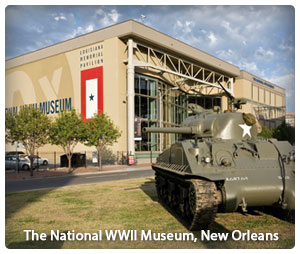Moving to New Orleans, LA
The Big Easy, America’s French-influenced, jazz-infused, capital of pleasure, is once again partying hard after being hit by Hurricane Katrina in 2005. Though the population is still returning, business is already back, and the city’s famous culture never left.
Today’s New Orleans is a major player in the energy industry, and its unique offerings attract 8.3 million each year, pumping the local economy. The city remains one of America’s most culturally-influential places.
Layout of New Orleans
New Orleans is located at the southeastern tip of Louisiana, where the Mississippi River drains into the Gulf of Mexico. It is situated on low-lying, swampy land. The Gulf of Mexico provides the city with many fishing and recreational opportunities.
New Orleans is the center of a larger metropolitan area that includes the nearby large cities of Metairie and Kenner. It is home to over 1.2 million people.
Positives of New Orleans
- Architecture – From the French Quarter, to Bourbon Street, to any ho-dunk neighborhood, New Orleans is filled with unique architecture. Many of its building were created by the French and Spanish back in the early 1800’s.
- Mardi Gras – The party to end all parties occurs right in New Orleans each year. Grab your beads, masks, bottles and horns, and join the procession of pleasure.
- Culture – New Orleans is rich with a history influenced by multiple cultures. It is also the leading purveyor of jazz music and brass bands, and has a famous cuisine based on fresh seafood and spice.
- Fuel/Port Economy – Because it is located on the Gulf of Mexico, near many oil and natural gas rigs, New Orleans plays a heavy role in the fuel and energy industry. It also has one of America’s most-used ports.
- In-City Transportation – New Orleans is serviced by Amtrak for travel to distant cities, and it has an inner-city system of trollies, ferries buses that, though not perfect, is better than that of many larger cities.
Negatives of New Orleans
- Hurricanes – Obviously, New Orleans is very susceptible to hurricanes. Because it is located on very low, marshy land, when a big storm makes landfall, it can create severe flooding.
- Summer – Summer can be densely humid and burning hot at the same time. Also, the area is prone to severe thunderstorms during these months.
- Rebuilding – Many of New Orleans’ neighborhoods were utterly destroyed by Hurricane Katrina and are still in the process of being rebuilt. The city, though making progress, is not yet whole.
- Metro Transportation – The larger metro area is heavily dependent on cars. Getting into the city from the suburbs often involves sitting in traffic on clogged highways.
- Crime – New Orleans is known to suffer from higher-than-average crime rates, though much of that crime is located in certain neighborhoods.
Decided to move to the Big Easy? Time to find some New Orleans moving companies. We have the best right here: New Orleans movers.



